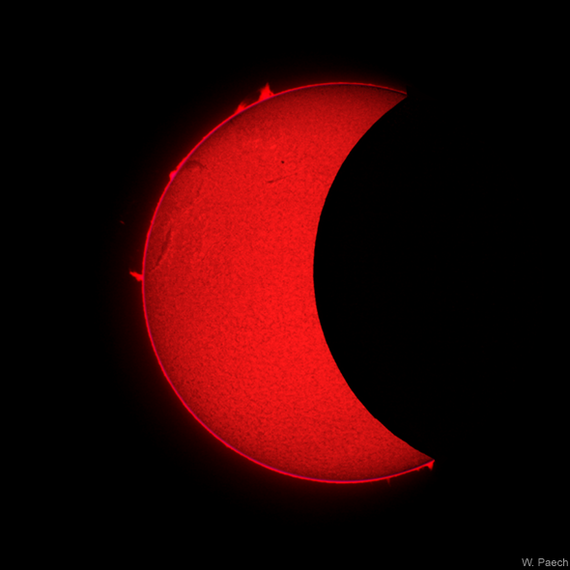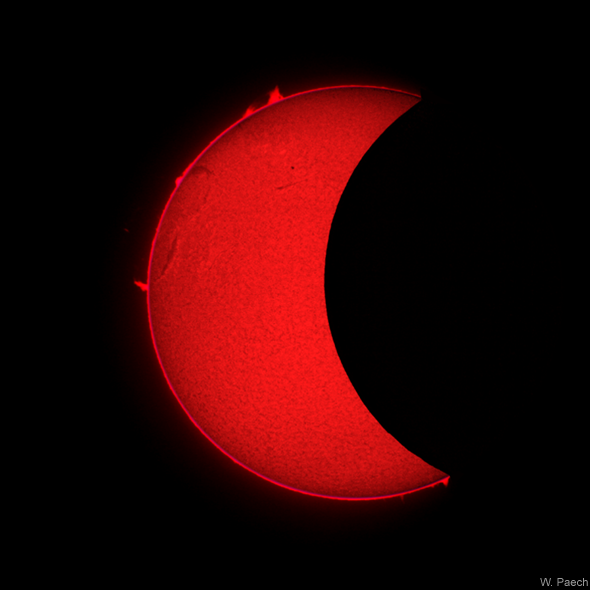Starting at 9 a.m. Dipl.-Ing. Franz Hofmann gave visitors an introduction into the rare event with the lecture "Die (fast) schwarze Sonne".
From 9:35 a.m. on the celestial spectacle could be observed on the Messdach. For a safe look into the sun special glasses for the solar eclipse were distributed. This provided some distraction as well for our youngest visitors waiting to be admitted to the astronomical station.
The large refractor which is equipped with a white light filter granted visitors a close look at the eclipse. Besides the easily visible obscuration of the sun a single small sun spot, the limb darkening of the sun and the moon limb profile could also be observed.
Sun spots are areas on the sun's surface where strong magnetic fields obstruct the transport of hot materials from the lower sun layers. These areas are with about 4000 °C significantly cooler than their surroundings with about 5500°C. This leads to a lower radiant intensity and therefore a darker appearance.
The visible solar disc appears at the limb significantly darker than in the centre of the sun. This phenomenon known as limb darkening is caused by the view through gas layers of the sun which vary in temperature. In the centre of the solar disc we look vertically onto the surface and therefore a little bit deeper into the gas layers than on the limb. The deeper gas layers are hotter and radiate more light than the higher situated cooler gas layers. Therefore the centre of the sun appears lighter than the solar limb.
The moon limb profile shows clearly mountain ranges and valleys of the impact basins and craters on the moon limb.
The small refractor of the astronomical station was equipped with a H-alpha filter and shows the occultation in the light of the red hydrogen-alpha line at 656 nanometres. This way the chromosphere of the sun could be observed. The chromosphere lies above the photosphere visible in the white light and is completely overpowered by it. Only during a total solar eclipse or with an H-alpha filter the chromospere is observable. Besides the chromospheric network on the sun's surface also several very nice protuberances at the limb of the partially darkened sun could be observed - a very special experience.


 ©
W. Paech
©
W. Paech
For the recording of the event a Skywatcher Esprit 80ED (Brennweite 400 mm) with Baader solar filter foil ND5 was used which had been added onto the big refractor. The images were taken with a Canon EOS 550D. The shooting interval was 20 seconds and the exposure time 1/1000 s.
The H-alpha composite image was kindly provided by Dipl. Ing. Wolfgang Paech.






